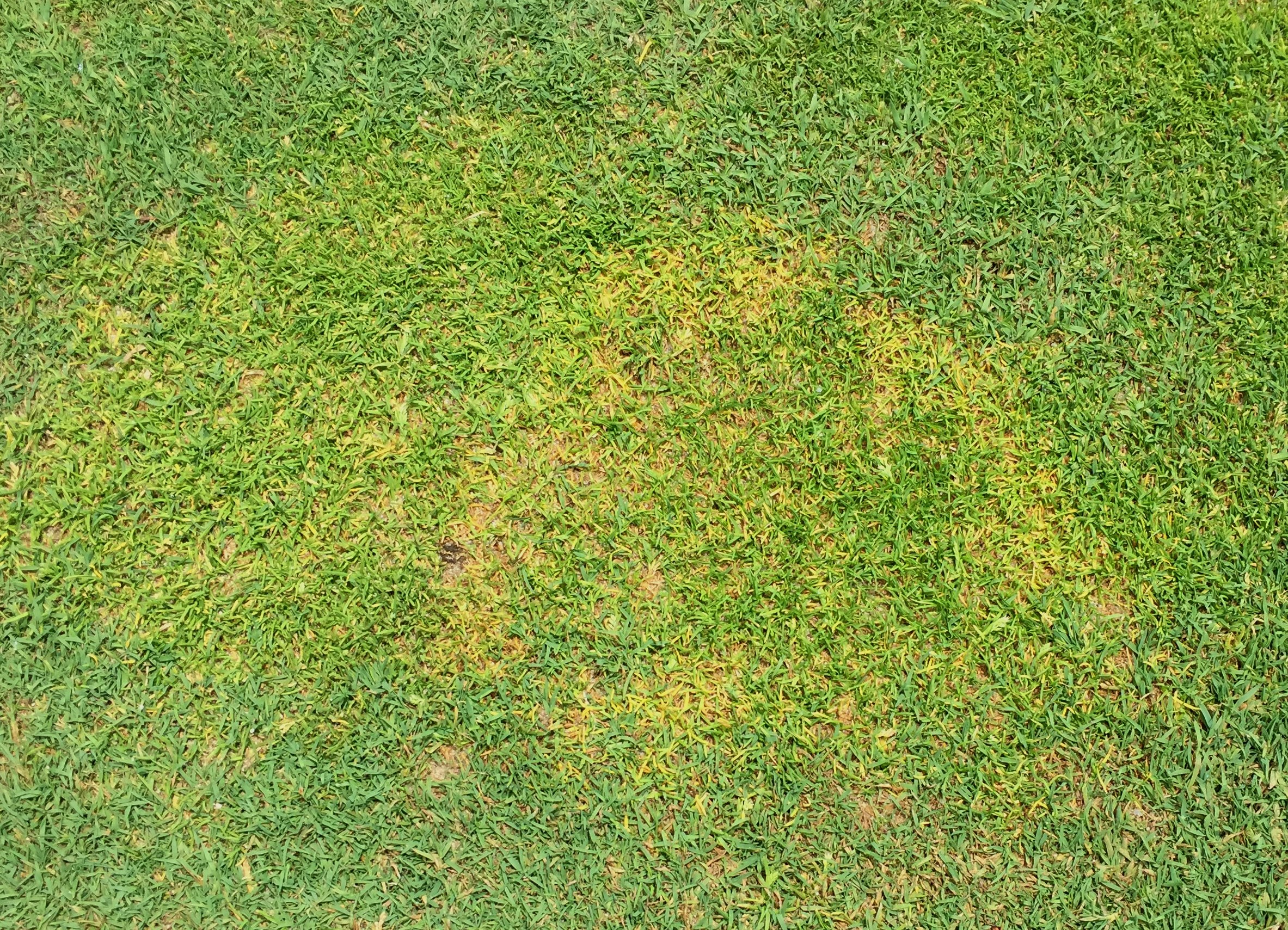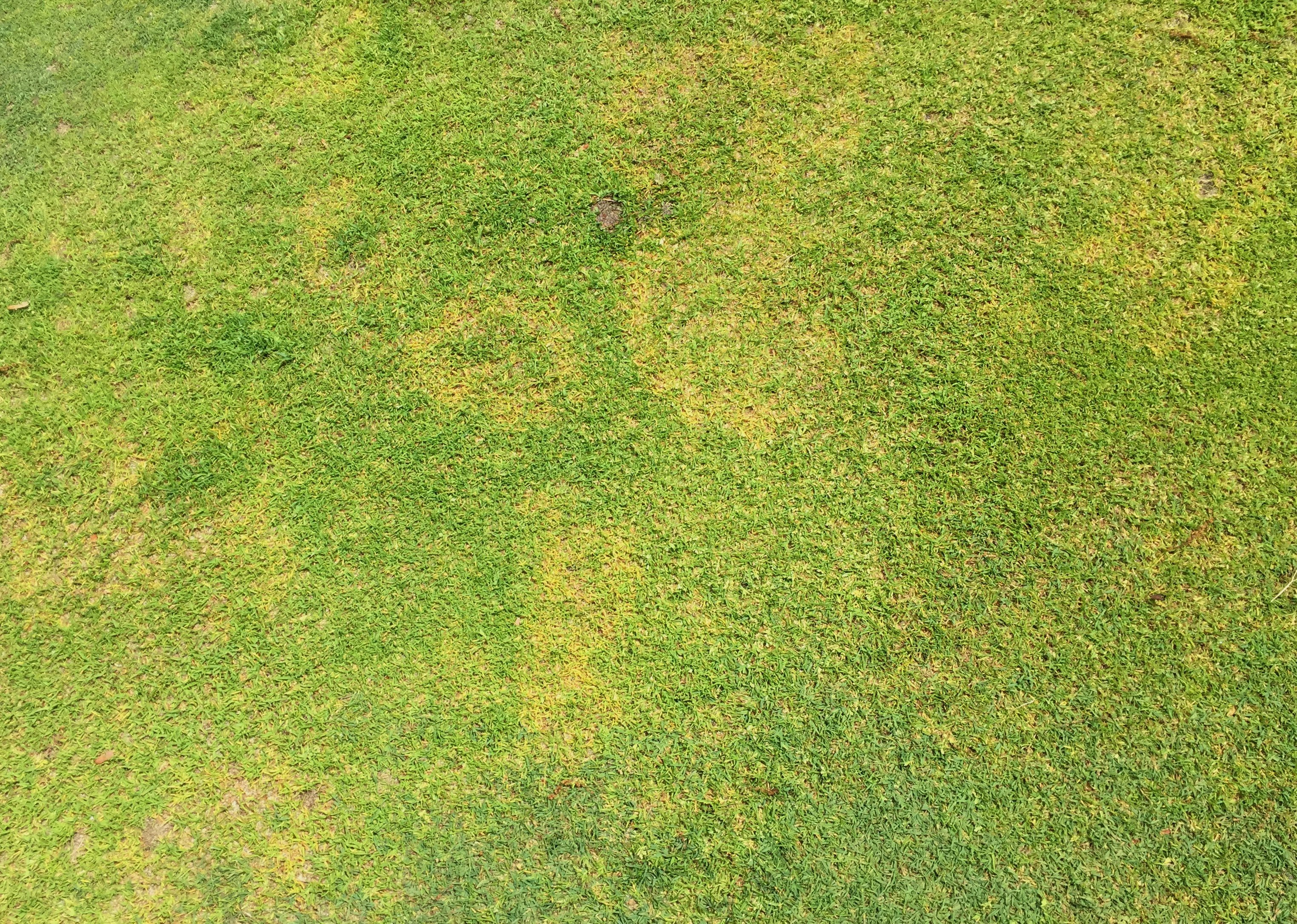Brown Ring Patch Active in Central PA
May 26, 2017 in Articles, Extension

Brown ring patch on annual bluegrass putting green
By Pete Landschoot, Professor of Turfgrass Science, Penn State
On May 22nd, I received a call from a golf course superintendent in central PA about a disease that was producing yellow circular patches on his annual bluegrass greens. The symptoms looked like necrotic ring spot; however, when the superintendent and I looked at the crowns and roots, we did not see the dark-brown vascular root and crown discoloration typically associated with this disease. After incubating a disease sample in a plastic bag overnight and looking at infected tissue under a microscope, the pathogen was identified as a Rhizoctonia fungus – most likely the species that causes brown ring patch disease.
Brown Ring Patch
Brown ring patch has been in the U.S. since at least 2007, and maybe as early as 2003 (Chen et al., 2007). The causal pathogen is Waitea circinata var circinata, a Rhizoctonia fungus closely related to the causal pathogens of brown patch and yellow patch diseases. In the U.S., brown ring patch is most common on close-cut annual bluegrass, and does not appear to affect creeping bentgrass. Symptoms appear as yellow rings or patches, a few inches to 3 feet in diameter. In severe cases, affected turf can turn brown and die. The fungus attacks the leaves, stems, and crowns of the plant.

Brown ring patch on annual bluegrass putting green
In Pennsylvania, brown ring patch usually occurs in May or June under a wide range of temperatures (60 to 95oF) and during overcast and humid conditions. Not much is known about cultural control measures, although some reports indicate brown ring patch may be more severe under low nitrogen fertility.
Fungicides that control brown patch and yellow patch appear to work well in controlling brown ring patch. Fungicides such as Heritage (azoxystrobin), Headway (azoxystrobin + propiconazole), Renown (azoxystrobin + chlorothalonil), Endorse (polyoxin-D), and Prostar (flutolanil) have shown good efficacy against this disease. One fungicide that does not appear to control brown ring patch is thiophanate methyl. For a comprehensive overview of chemical control of brown ring patch see “Chemical Control of Brown Ring Patch” in the August, 2009 issue of Golf Course Management (McDonald et al., 2009).
References:
Chen, C.-M., G.W. Douhan and F.P. Wong. 2007. First report of Waitea circinata var. circinata causing brown ring patch on Poa trivialis in California. Plant Disease 91:1687.
McDonald, S., D. Settle, L. Stowell, C.Chen, and F. Wong. 2009. Chemical control of brown ring patch. Golf Course Management. 82–88.